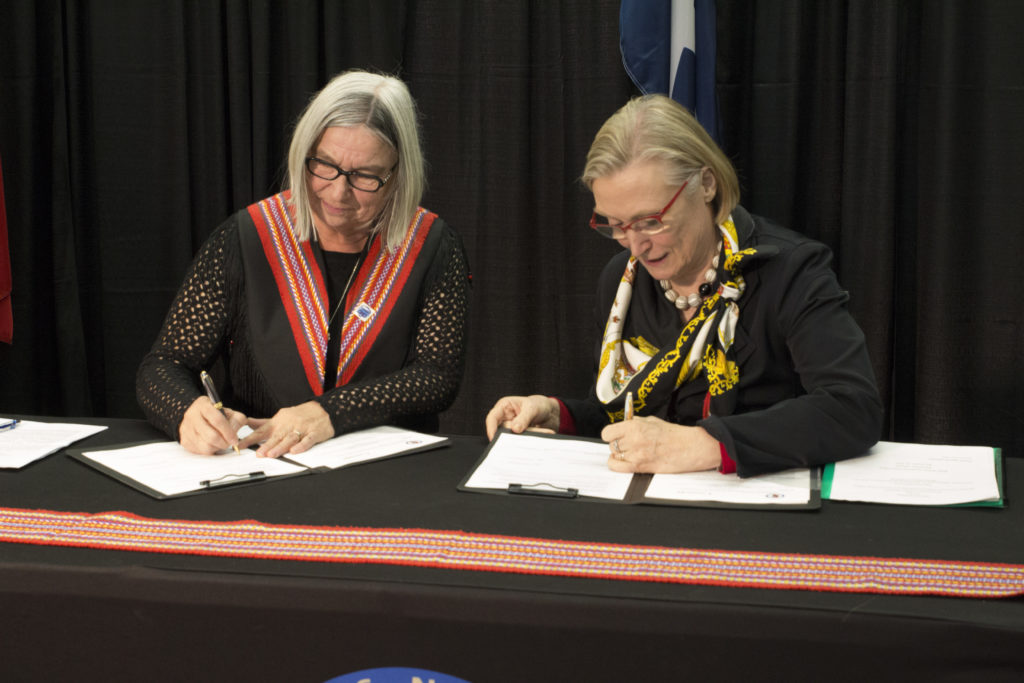A New Chapter Begins in Canada’s Relationship with the Métis Nation of Alberta
Posted on: Nov 24, 2017

Every November, we celebrate Métis Week. It is a chance to reflect on who we are as a distinct Indigenous people. November 16 is always an important date in our commemorations. This year, it marked exactly 132 years since Canada executed Louis Riel. This year, however, it also marked something far more positive—the signing of a new agreement between Canada and the MNA meant to renew our nation-to-nation, government-to-government relationship and advance reconciliation between us.
It should be no secret that the Métis Nation’s relationship with Canada has often been troubled. Immediately following confederation, Canada began its colonial expansion westward into our homeland. Our leaders were concerned that Canada would not respect our rights, either to our lands or to govern ourselves. Historically, and still to this day, many choose not to see us as a distinct Indigenous people with collectively-held rights to land, self-determination, and self-government.
The Métis Nation was initially born of the fur trade, but we quickly developed our own language, culture, and identity, distinct from our forebears. We are not simply “mixed blooded.” We are a people with all the rights that peoples hold. We have always been staunchly independent. We are Otipemisiwak—the free people, the ones who own themselves. In response to Canadian colonialism, we twice established our own independent governments and took up arms to defend our lands and right to exist. First in 1870 in the Red River and then in 1885 at Batoche.
In reaction to our resistance, Canada hanged Riel. Our leaders and people were branded as traitors, simply for defending their homeland. After 1885, to quell dissent and to secure access to our homeland, Canada offered scrip (essentially a coupon to be traded for land or money) to Métis residing in the Northwest Territories, including present day Alberta, in exchange for the supposed extinguishment of Métis rights. Instead of dealing with us as a people with collective rights, Canada contrived to divide us, dealing with us as individuals.
Scrip had a devastating effect on the Métis Nation. Scrip was nearly impossible for Métis to redeem for actual land, and the scrip system was rife with fraud and abuse. Overwhelmingly, scrip ended up in the hands of land speculators; our ancestors received next to nothing for it. Scrip dispossessed us of our land and dismembered our communities. By the end of the 19th century, the sight of Métis shanties crowding Crown land on the edge of prairie towns was so common that we became known as “the road allowance people.”
But we kept fighting. We fought to keep our people together. In 1928, Alberta Métis created the Métis Nation of Alberta to be our collective voice in this province. Through dedication and sacrifice, we have built the Métis Nation of Alberta into our modern, Métis self-government in the province—even as others continue to diminish our accomplishments. In recent years, the Métis Nation has won increasing recognition of our nationhood, rights, and claims in the courts. We have improved the health, education, and housing of Métis in Alberta, but we still have much to do.
This week, our determination started to bear fruit. On Thursday, I had the honour of signing a Framework Agreement with Carolyn Bennett, Canada’s Minister of Crown-Indigenous relations. This agreement sets a new course for us and Canada. It establishes formal negotiations to finally have our Métis self-government recognized. It commits to dealing with priorities our citizens have identified, like health, housing, and our rights. Most importantly, it establishes a process to acknowledge and address the sorry legacy of Métis scrip.
We know that significant work lies ahead, but we have never shied away from that. Our people are ready for change. We are ready to write a new chapter in Canada and the Métis Nation’s shared story, one that I hope even Louis Riel would be proud of.
– Audrey Poitras
President, Métis Nation of Alberta
To view a copy of the signed framework agreement, click here.